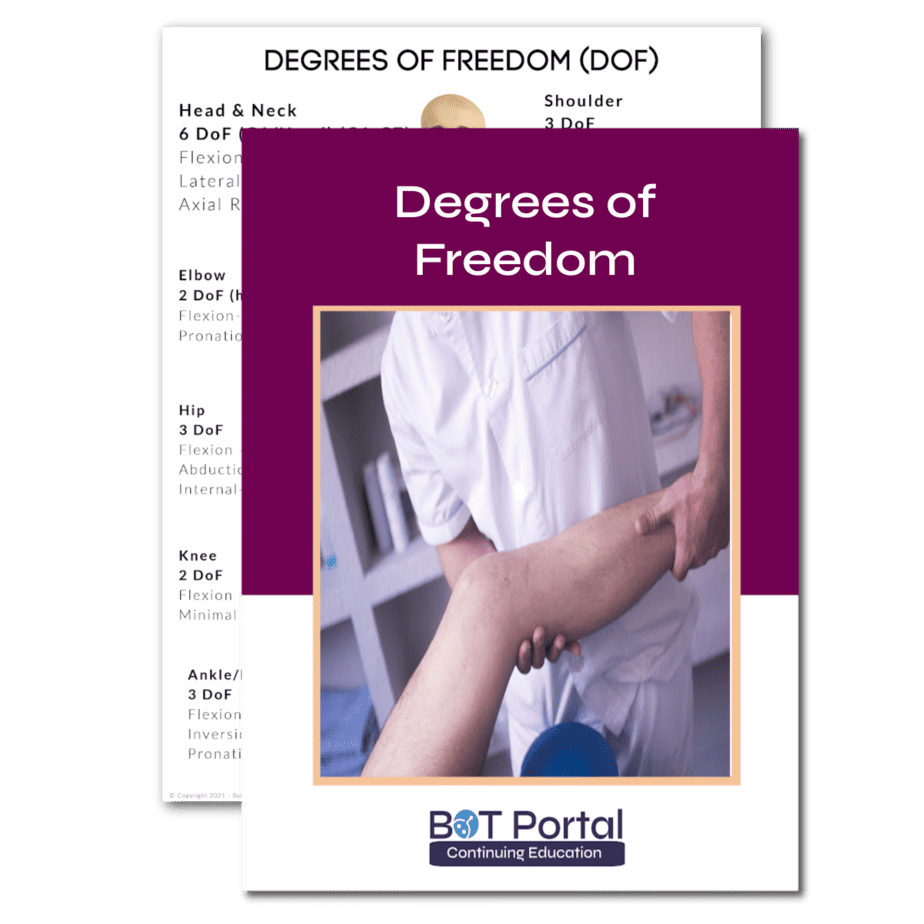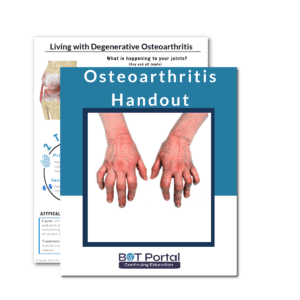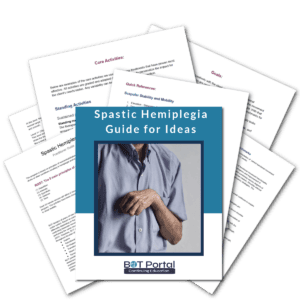Description
Degrees of Freedom for Full Anatomy
Download the pdf for “Degrees of Freedom for Full Anatomy” to use during Kinesiology and Functional Anatomy as a student or as a quick reference when treatment planning. It is extremely important to know mobility-potential of the human anatomy so that you can offer facilitation of maximum recovery.
Knowing the degrees of freedom of each joint in the human body will greatly impact clinical insight into activity analysis.
More Information:
Degrees of freedom (DOF) in anatomy refer to the number of independent movements that can occur at a specific joint or within a specific anatomical structure. In other words, it represents the number of ways a joint or body segment can move in space.
For example, the human shoulder joint has three degrees of freedom: flexion/extension, abduction/adduction, and internal/external rotation. This means that the shoulder joint can move forward and backward (flexion/extension), sideways (abduction/adduction), and rotate inward and outward (internal/external rotation), providing a wide range of motion and versatility.
Similarly, the wrist joint has two degrees of freedom: flexion/extension and radial/ulnar deviation. This allows the hand to move up and down (flexion/extension) and side to side (radial/ulnar deviation), enabling activities such as writing, typing, and grasping objects with various hand positions.
The hip joint has three degrees of freedom as well: flexion/extension, abduction/adduction, and internal/external rotation. This allows for movements such as bending forward and backward (flexion/extension), moving the leg away from and towards the midline of the body (abduction/adduction), and rotating the thigh inward and outward (internal/external rotation).
Understanding the degrees of freedom in anatomy is essential for healthcare professionals, particularly in fields such as physical therapy, occupational therapy, and biomechanics. It helps in assessing joint function, designing rehabilitation programs, and predicting how injuries or surgical procedures may affect movement patterns. By understanding the degrees of freedom in anatomy, healthcare professionals can tailor interventions to optimize movement efficiency, prevent injuries, and promote overall musculoskeletal health.
Other helpful links:
Check out BOT Portal: Resource Site for Occupational Therapy Students and Practitioners




